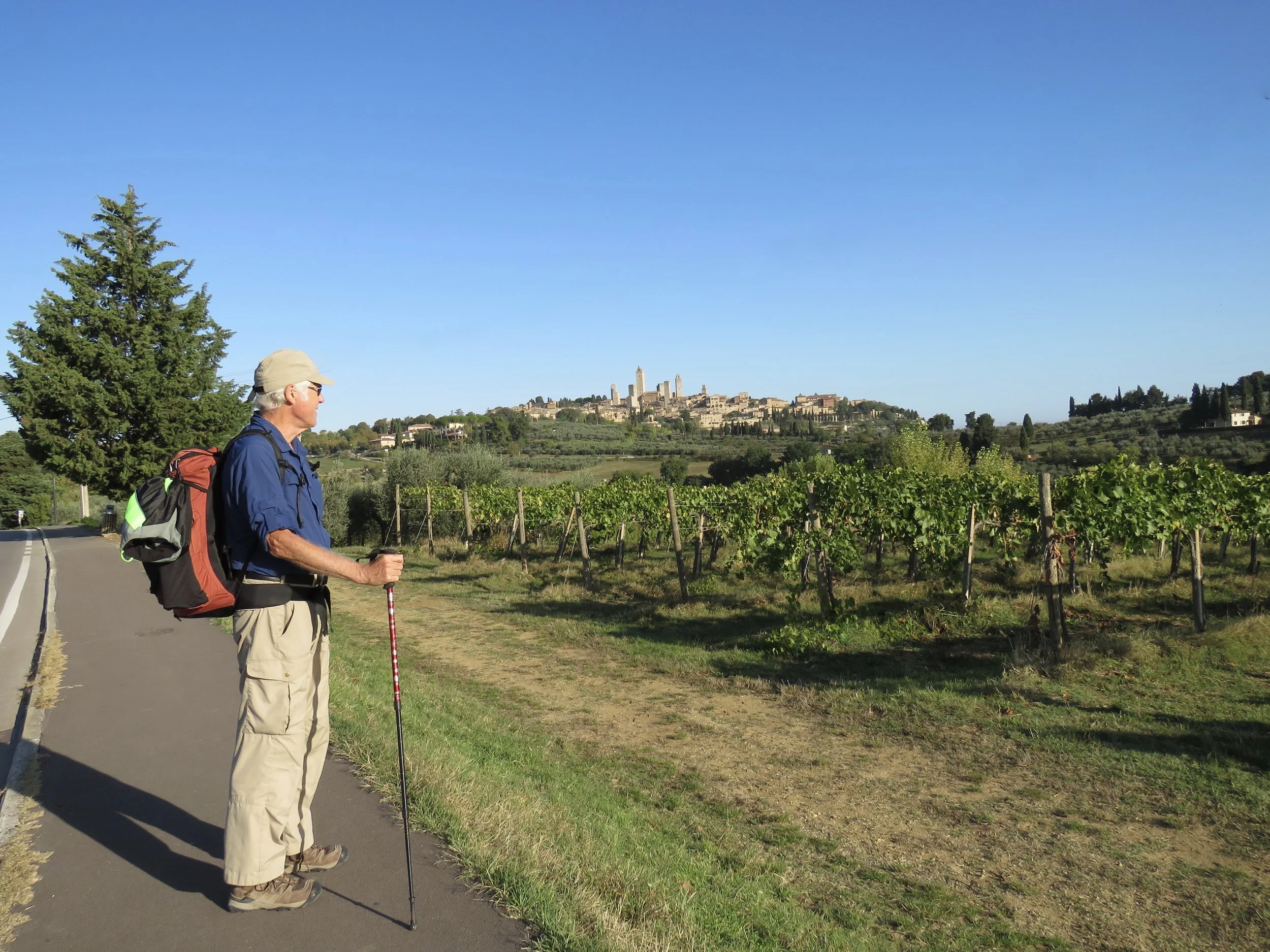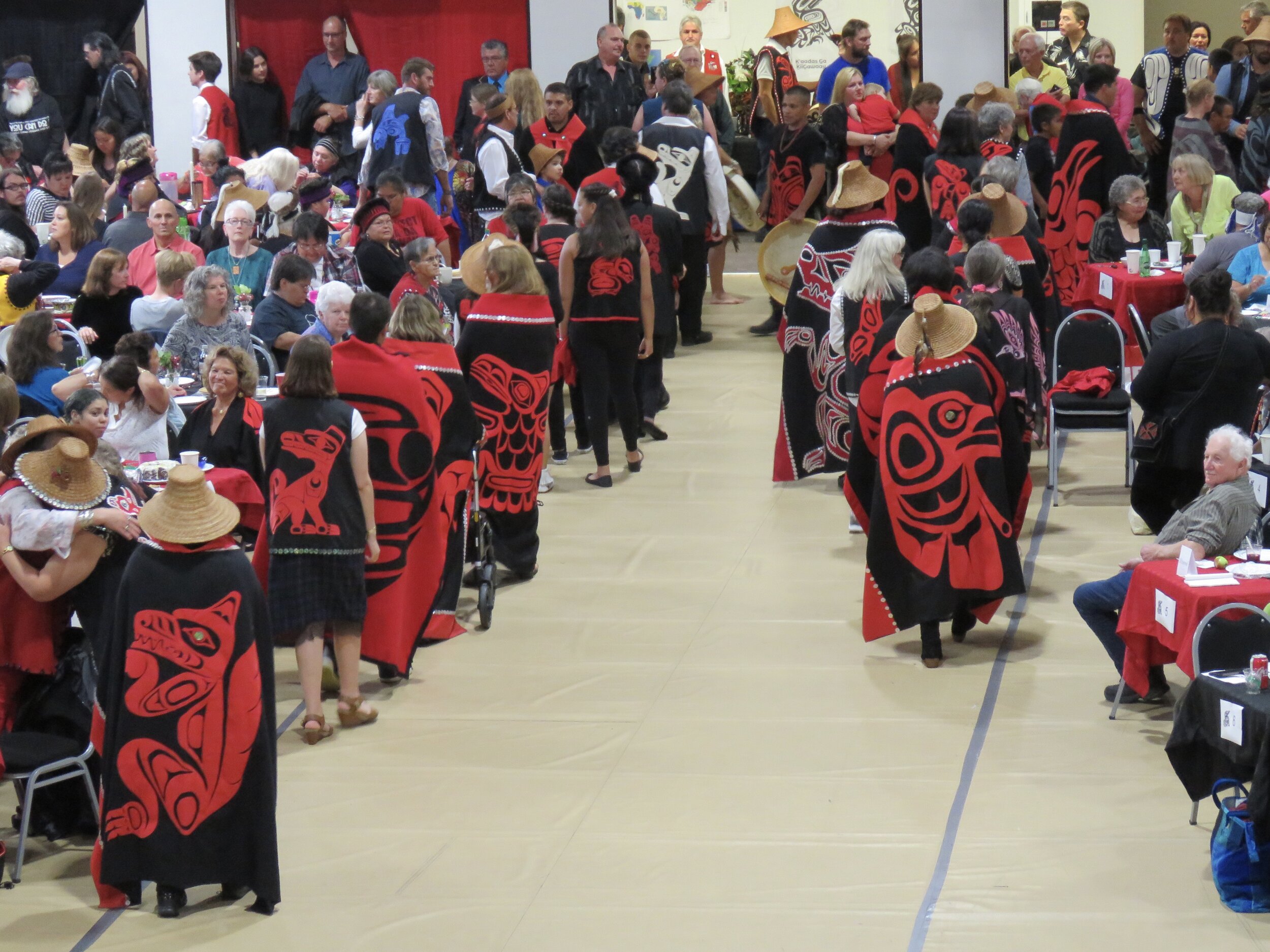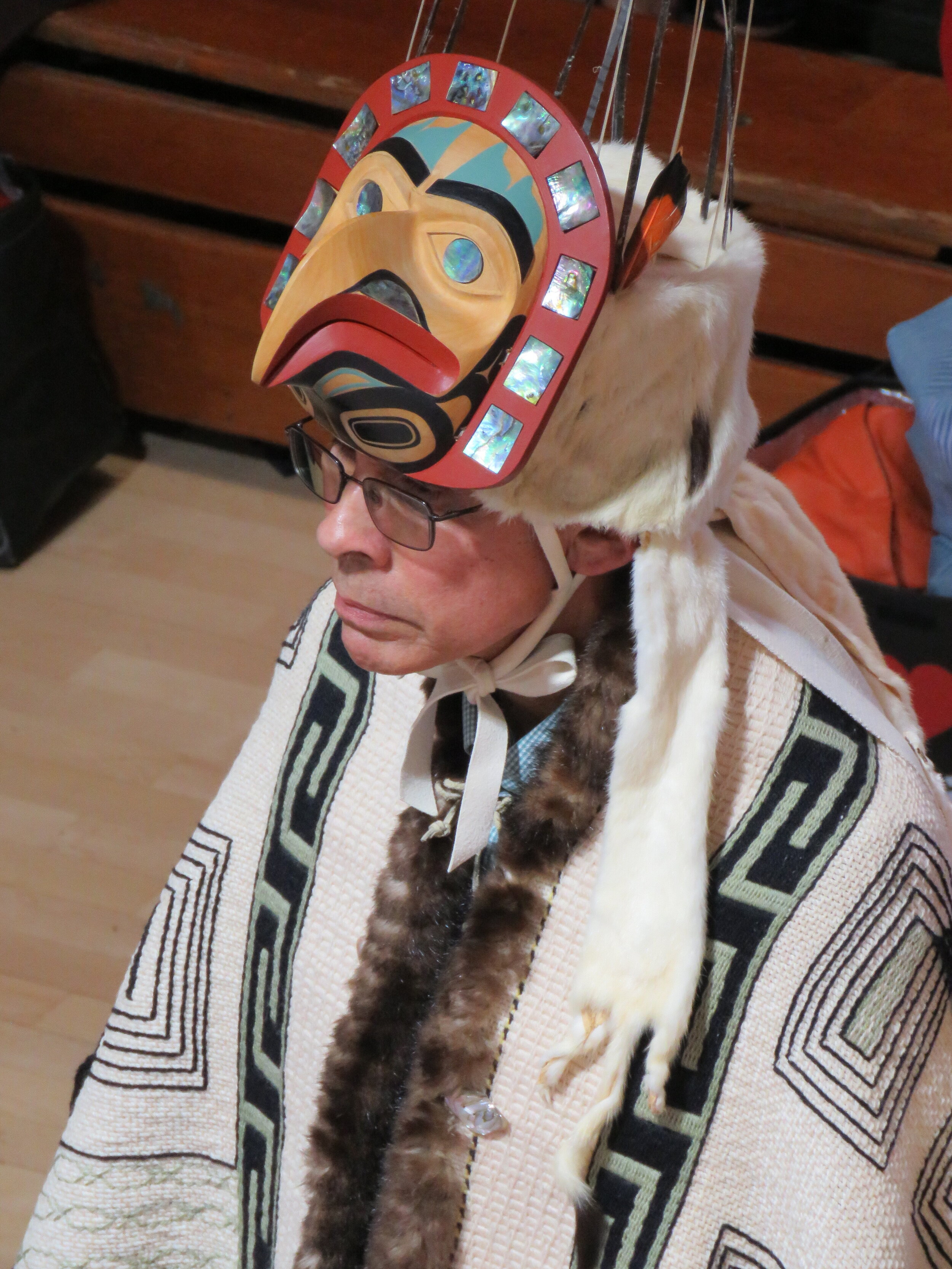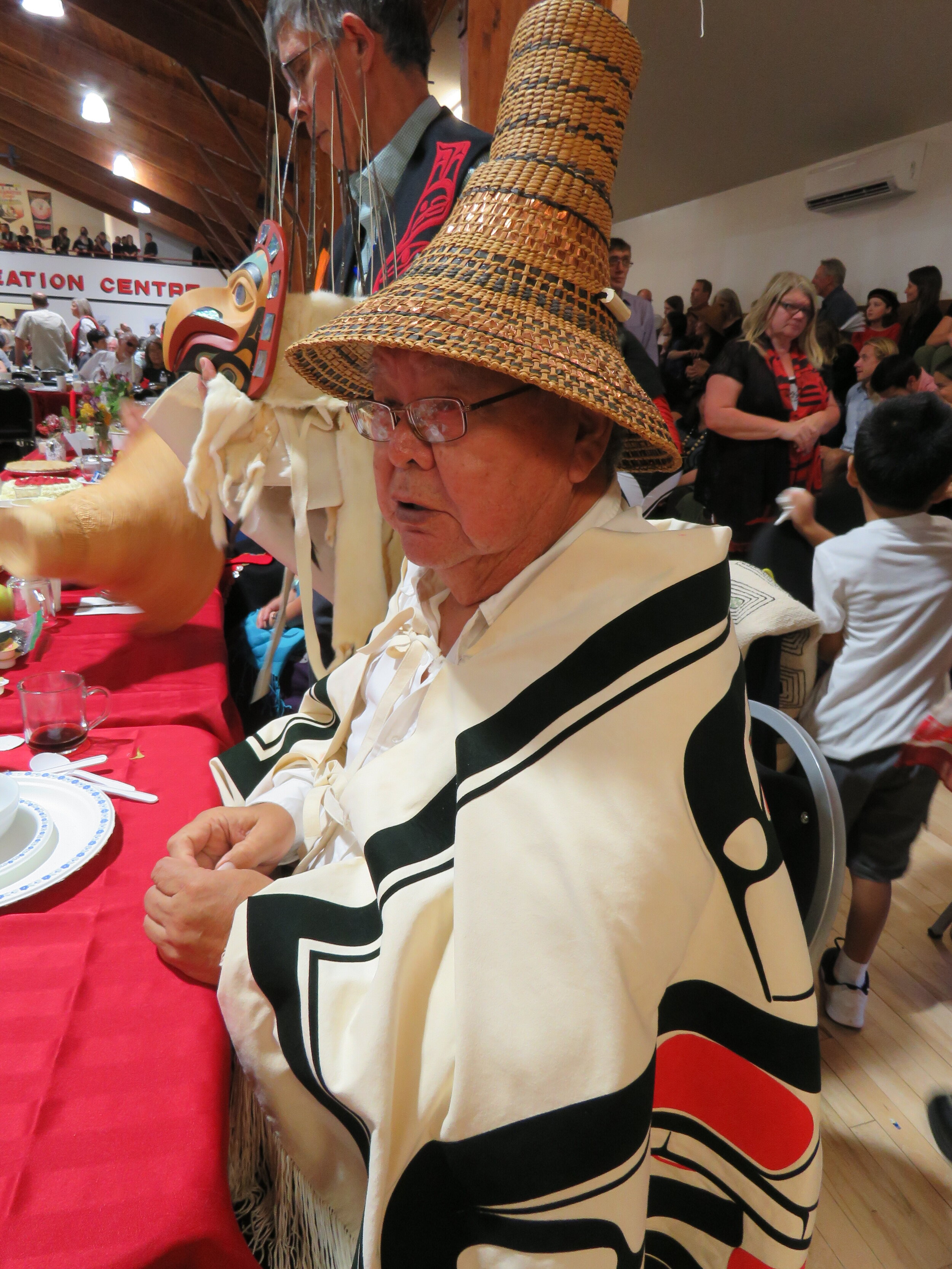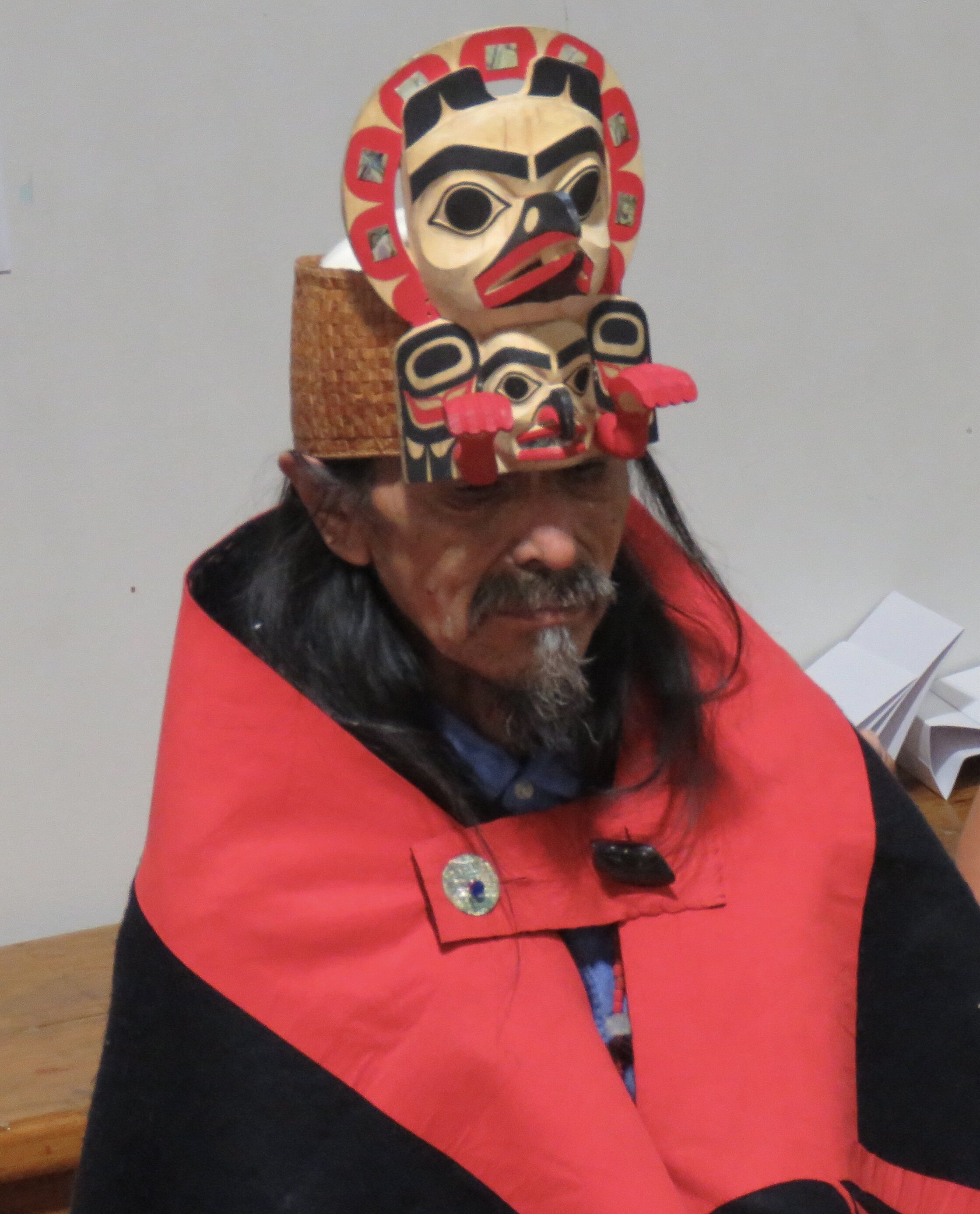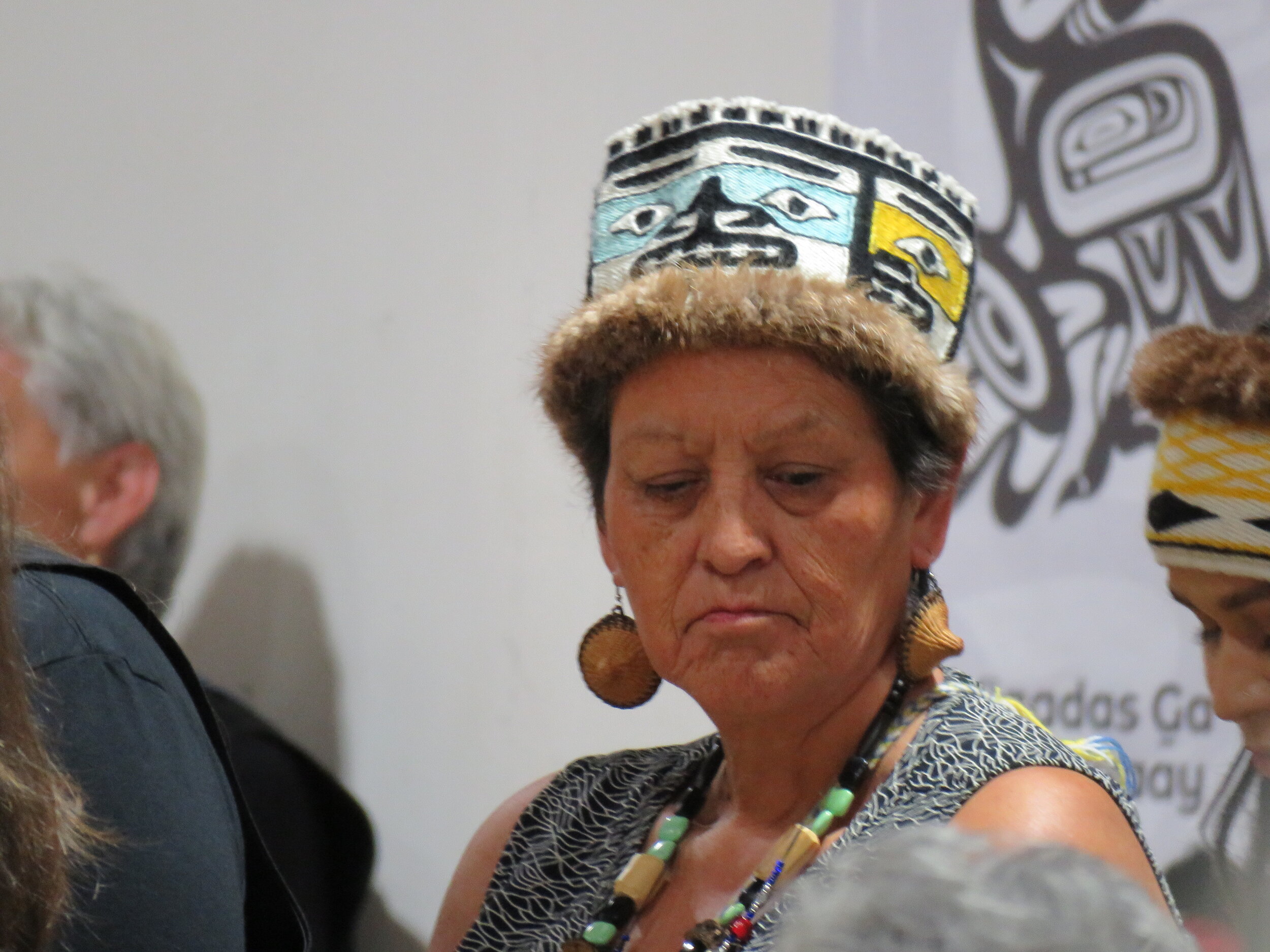Potlatch: a party or celebration; among American Indians of the northern Pacific coast, a ceremonial festival at which gifts are bestowed on the guests in a show of wealth that the guests later attempt to surpass.
Having lived in the Yukon I had seen a fair bit of First Nations customs, including button blankets, dances, drumming and celebrations. But once in my life I wanted to experience or, as it is called, to witness a true potlatch.
Thanks to friends in Haida Gwaii, a remote island in northern BC just south of Alaska, I was invited to a potlatch that would celebrate a new chief. The event was held in the village of Skidegate, Haida Gwaii in a hall about the size of a gymnasium.
Along the way I was on a steep learning curve about traditions and about local politics and customs. This was a rare occasion where the sitting chief was ‘dethroned’ by this matriarchal society because the community did not believe that the chief had represented them in the correct ways and may have shown corrupt behaviour in relation to working with Enbridge, an oil company, while the majority of people here do not want a pipe line.
Selecting a new chief had taken several years and painful proceedings. Even now, as the community was ready to celebrate, the family of the ousted chief had the right to be heard first. They spoke at length about the difficult situation and the pain it caused.
As family members finished voicing their concerns, they were respectfully listened to by the entire community, after which they turned their blankets and vests inside out to leave the hall in a way that resembled a funeral.
But then the festivities were ready to start. Some 400 people witnessed this potlatch. We were all seated at long tables laden with pies, plates and cutlery. First the room was cleansed through a smudging ceremony at which smoke was danced through the hall to clear the bad words and feelings.
The new chief, surrounded by close family, made his entrance wearing a regular shirt, jeans and mukluks. Then the women closest to him, perhaps his mother or aunties, took newly designed Haida vest and blanket and held them up for all to see. They dressed him, finishing with the carved wooden headgear framed by ermine skins. The top of the headgear was filled with eagle down. When I searched for the significance of this I found the following explanation:
The Haida Peace and Welcome Dance is a traditional dance performed by hereditary chiefs at a Haida potlatch. The welcoming chief wears a robe or colorful button blanket displaying his family crest. Eagle down held in the crown of the eagle frontlet headdress, which is adorned with trailing ermine fur and inlaid abalone shell, is shaken out to float gracefully in a cloud around the dancer during his performance. The eagle down signifies peace and is considered a gesture of welcome from the Haida to their guests. The guest chief would often perform a similar dance in response. If the dances were held inside the Longhouse, the light from the central fire would reflect and flicker on the inlaid abalone shell in the eagle frontlet headdress.’
And indeed, when the chief was fully dressed, he was given his new name and had to ‘dance in’ his name. In doing so, he bowed his head to all of the visiting hereditary chiefs, scattering eagle down as he danced. These chiefs represented other clans, villages and islands.
Many of the chiefs, all dressed in blankets and headgear specific to their clan, spoke. Many of them addressed the sadness of the fact that a chief had to be ousted but their pleasure with the new chief.
And then they danced. The Eagle Dance was my favourite, with dancers soaring on wide spread ‘wings’ and thrill eagle cries filling the hall to the rafters.
All of this took many hours. In the meanwhile we ate. I am told it takes two years to prepare for a potlatch of this magnitude: fishing, growing vegetables, picking berries, baking breads and pies. There was halibut and smoked salmon, herring roe on seaweed, venison stew, clam cakes, octopus fritters and blueberry pie.
We listened to speeches and watched dancing and drumming for hours, yet the time flew by. I loved seeing all generations come together to celebrate. There were new born babes in arms as their mothers danced, and elders being helped by teenagers.
Seeing the multitude of regalia - blankets, ermine, abalone lined masks, woven cedar bark hats, carved ceremonial sticks - was like watching a display in the museum of anthropology come to life. I found it thrilling to witness since I had read many books about potlatches being forbidden by colonial governments as late as the 1950’s. I am so glad that traditions, language and customs of these regal coast Salish people have survived. And so grateful to my friends on Haida Gwaii for allowing me to witness this spectacular event. Haw’aa, haw’aa, thank you.
PLEASE NOTE: all images are copyrighted.
For books about Haida Gwaii, click here, then scroll to Canada.
